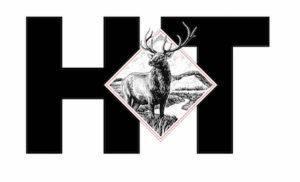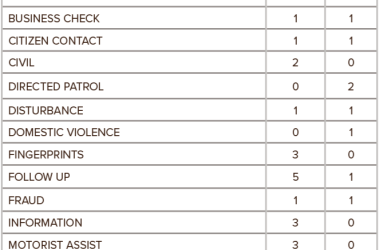RBC I Today, 25,000 head of cattle and 22,000 head of sheep call Rio Blanco County home.
This year’s crop of calves will number approximately 13,000 and lambs, when the ewes are all done, will be in excess of 33,000. This represents many day and night hours watching and helping new babies and mothers. This traditional spring calving and lambing lifestyle is carried out each year, good years and bad, in Rio Blanco County and has for more than 130 years. What a rich history.
To finish this workload justifies some relaxation. The veterinarians of the ’70s created a celebration titled The Afterbirth Ball. On Saturday, the Meeker Chamber of Commerce will bring the past to the present with the renewal of the Afterbirth Ball.
Between the 1860s and 1900, the county was primarily government controlled as the White River Reserve. The mountain parks and rich bottom valleys were covered with abundant grass. In Piceance Creek, cowboys had to climb high on the hillsides to see the cattle hidden by the tall wild-rye grass growing in the valley.
Northwest Colorado, like a gold mine, attracted big money. Eastern investors and foreign money jumped on the chance to beat the low interest rates and make a buck on the cattle industry harvesting free grass. Bona fide, and some not so bona fide, cattle men of Texas, New Mexico, and Utah had cattle to sell, all needing a belly full of cheap grass. Browns Park caught the attention of these cattle investors, and the “cattle gold rush” was on. Mostly steer cattle were routed off the main northern trailing herds, others came from Utah, Idaho, Texas, New Mexico, eastern Colorado, Kansas, and Wyoming, and shoved west into the Park. It was a “thin old doggies oasis” and “an investor’s dream.”
Browns Park soon settled to year-round ranch operations taking over control of large tracts of range. The excitement for free range was diverted to Rio Blanco County. It seems the Utes got cross wise with Mr. Meeker and the White River Indian Agency was closed. The word got out quickly that the land controlled by the agency and a major reserve area was to be opened as public domain. The large cattle outfits had stayed away from this Reserve area so long and the government and Indian Agency had responsibility for it. Some small operators had grazed fringe parts of the agency holdings with little conflict. The only cattle legally in the country were a thousand head owned by Dunk Blair, who had married a squaw having legal grazing rights.
With the reserve opening, local historian Terry Mobley says that the big 12 cattle outfits had 200,000 cattle grazing a huge area, including the Rangely and White River Agency areas. For example, the 84 Outfit brought in 3,000 head from Texas, Fleming and Gregory brought in 1,500 head from the Laramie plains. The Bott Outfit brought a large bunch of cattle in from around Denver and Douglas County. An outfit owned by Hankey, Dendy and Johnson brought about 5,000 head in from the North Platte area in Wyoming. Two thousand head of Utah cattle were brought into the Piceance Creek area by Critchlow, Ayer and Company. Four other companies brought 10,000 head of Utah cattle into the Piceance and Blue Mountain areas. An outfit established in 1879, one of the oldest in the country, was the Hulett and Torrence herd of 5,000 head located north of the Indian reservation.
Individual operators having herds of 1,000 to 5,000 grazed with the big herds. For the most part, the cattle grazed the mountains in the summer and were driven to winter range near Rangely and the Utah state line. There were no fences and few formal corrals. Some of these drives required 50 cowboys working 40 days traveling with a number of chuckwagons.
It wasn’t all easy, particularly for the people living with the cattle. Cowboys were killed by accidents with cattle and horses, range wars, sometimes by rustlers and most often by the weather. Cattle and sheep were killed by bears, cats, coyotes, poisonous plants, drought combined with hard winters wiped out whole herds. From notes collected by historian Mrs. Reichert, she shares this from the Sheridan family records: “When the cattle first came in, they just went any place there was some grass. Grass was free. They’d just bring in a herd, turn ‘em loose, and let them stay till they were four or five years old, then they’d ship them. They didn’t feed many cattle in those days, just grazed them and sold for beef. The bigger they were, the fatter the got, and the more money they brought.
“We had an awful winter here 1908 and 1909. In fact, they lost two-thirds of the cattle in the county. Old Tom Kilduff, who was running the KBarT for the Baer Brothers told me that they brought 3,000 steers for ten dollars a head, brought them here and run ’em one summer and one winter. The next winter they went down to the lower country and lost 2,000 head.”
(Summer drought left the grass short for winter forage, it would get covered with ice, then snow would cover everything, the livestock could not paw down through to find the grass. There was no grass/hay stored and only enough hand cut hay to winter a few horses.)
“They come back with a thousand head, which they kept till they was 4 (years old). Then they shipped them and still made money, they brought 7 cents a pound and each weighed over a thousand pounds. They paid $30,000 for them and got back $70,000. They’d have done alright if they could have saved them all.”
While the dollar was sound, and before the government de-monetized silver, the money people could by southern cattle at $5 per head, hire cheap help to move them to the free grass area of open range, and hold them for four years. The cowboys drove cattle to local markets in mining towns, and trailed them to railheads, selling them for $50 to $70 per head. Eastern markets loved the big grass-fat steers.
The investors sent cowboys and herd managers up from the south, maintained chuckwagon crews, and provided the supplies needed to keep a bunch of nomadic cowboys happy. The White River Roundup, just one grazing area, required seven wagons, with 12 or 15 men with a wagon, and each man had at least seven horses.
Hard winters and large losses of cattle in 1889 and 1890 discouraged a lot of the large outfits, encouraging them to get out of the business. The panic of 1893 drove the rest out. The better-established outfits held on, and the homesteaders located in the reservation along the river and began to accumulate cattle.
In order to stabilize the livestock industry by converting more to cow-calf operations, a reliable feed and forage agriculture system was developed by the leaders. Ranchers developed irrigation water systems capable of supporting hay and grain production. Their agriculture products were needed to support ranching enterprises and to feed the horse and mule power relied upon to bring supplies to the communities, mining operations, and haul mined ore.
The livestock producers are credited with building the churches and schools and bringing law and order to the growing communities. Fred Riley in “This is What I Remember” book describes the changing society as people came in covered wagons pulled by a team of horses or mules. These “Nesters” usually had a cow, chickens, a pig or two, and a wife. They homesteaded, built a log cabin, barb wire fenced his land and grew jack rabbits and kids. Not able to make a living on his farm, the man would work at the mining camps, logging and construction camps. Others worked for the surviving cattle outfits. Many became farmers, growing hay and grain, selling their excess to ranchers and mining camps.
“So almost overnight the valley became a farming community.”
Taken from our rich history of Utes, government, cattle outfits and homesteaders. Compiled from stories, books and records researched and assisted by Terry Mobley, Dave Steinman, Ellen Reichert, CSU Extension, “Where the Old West Stayed Young” “This is What I remember,” and my own nester bias.
— Sam Stranathan





















